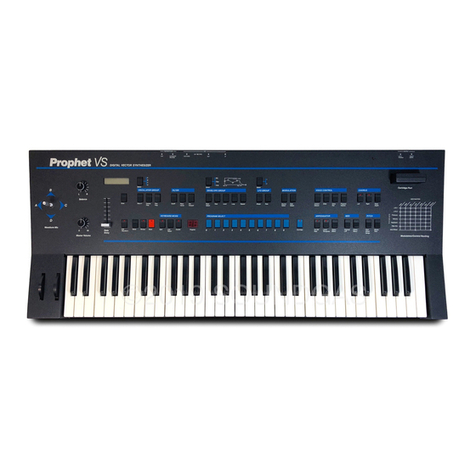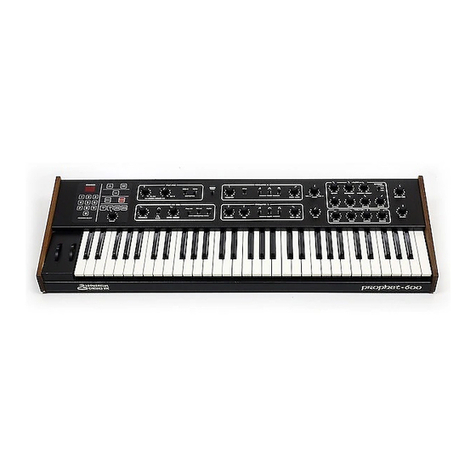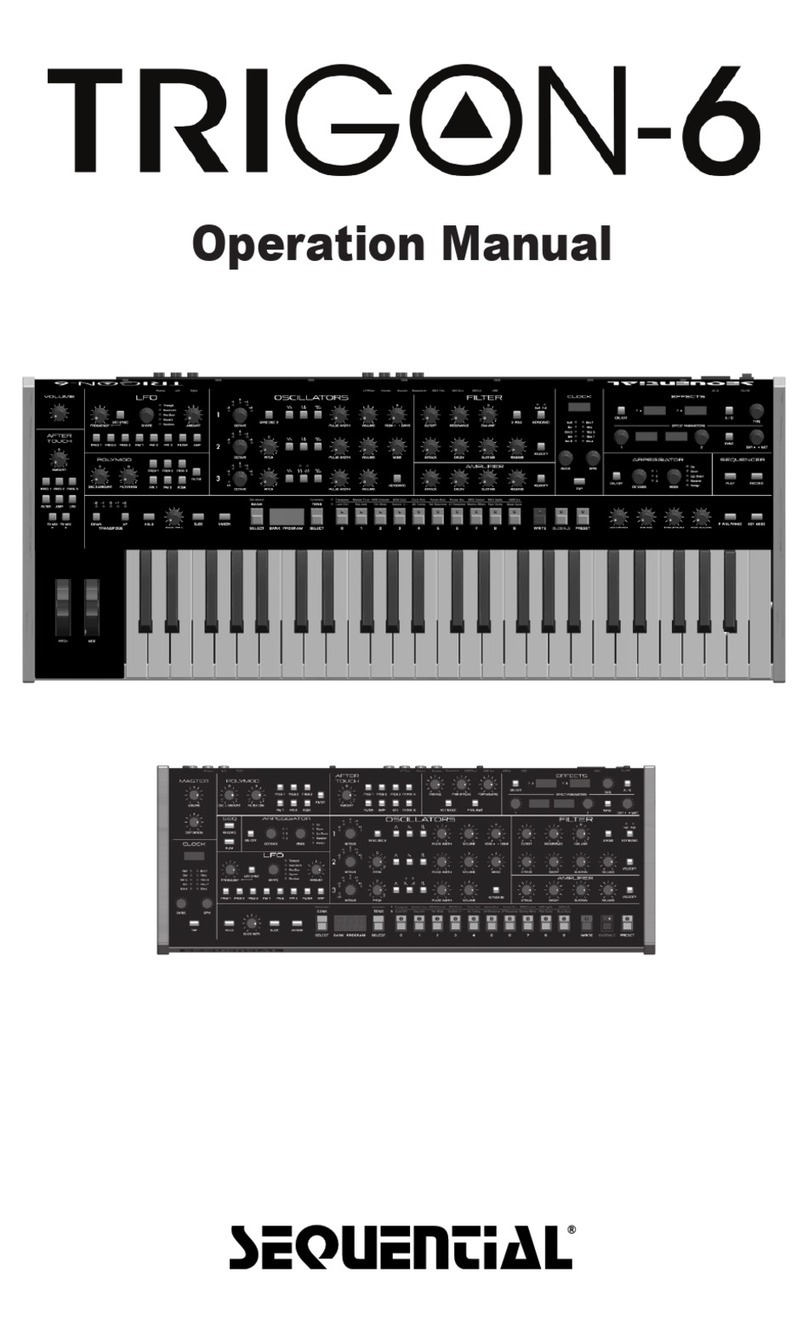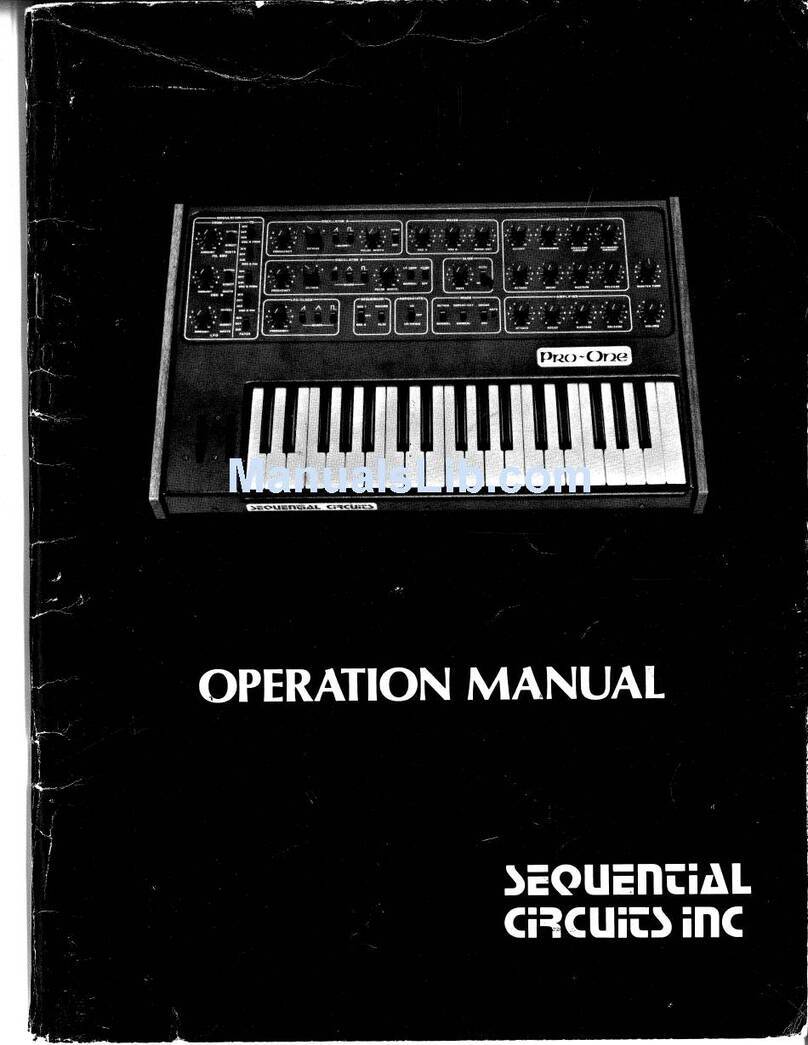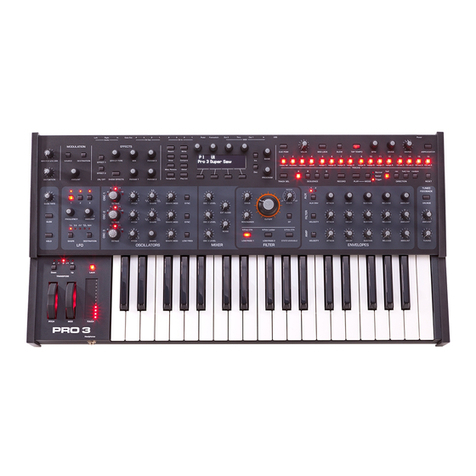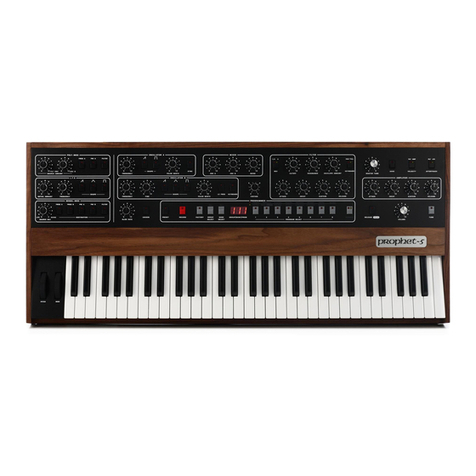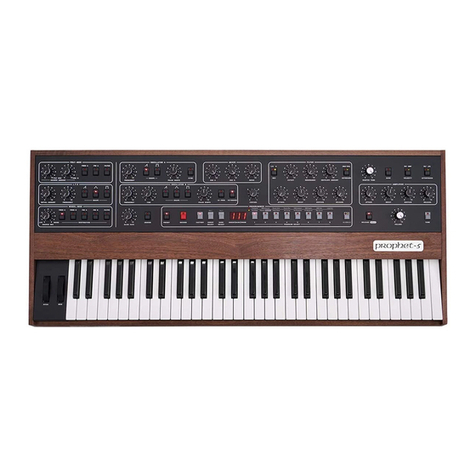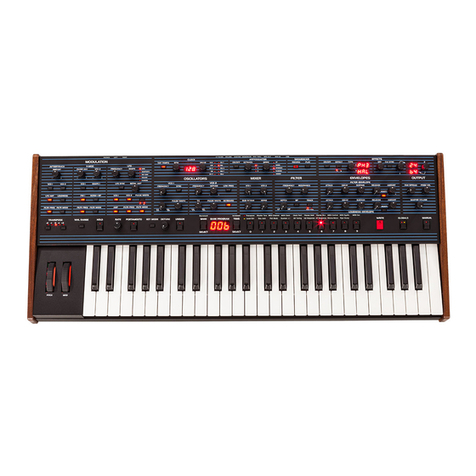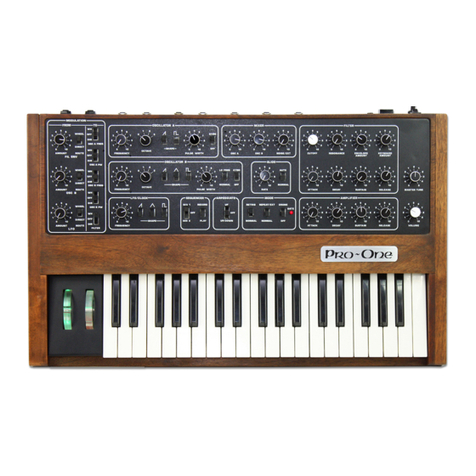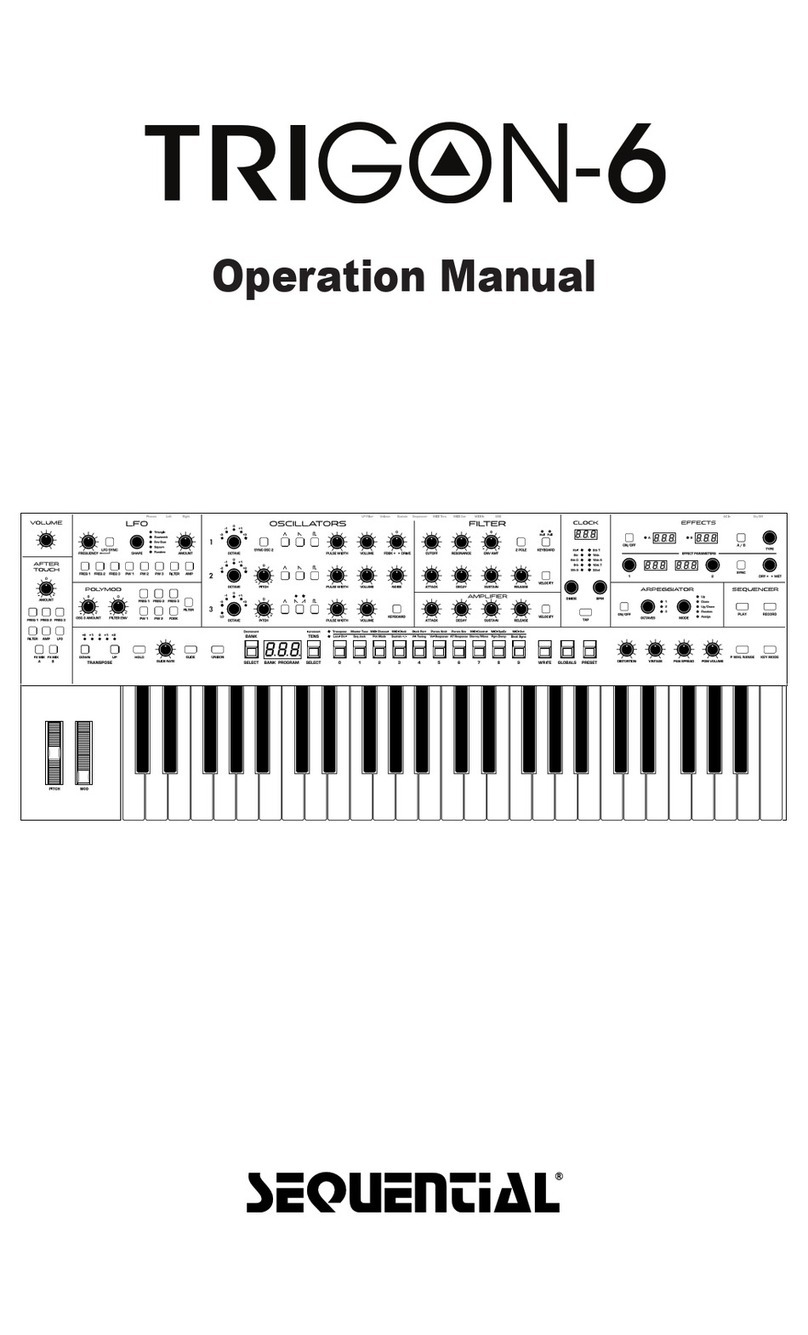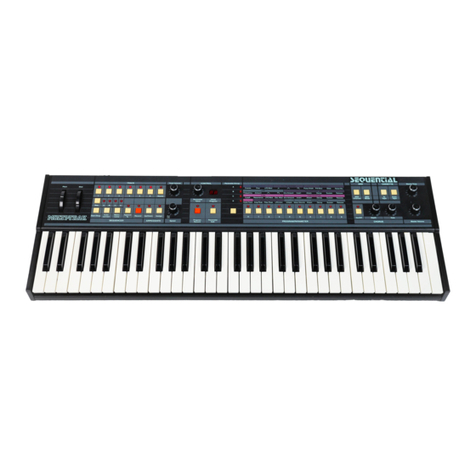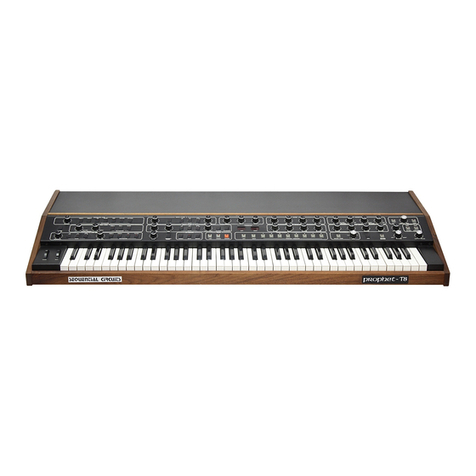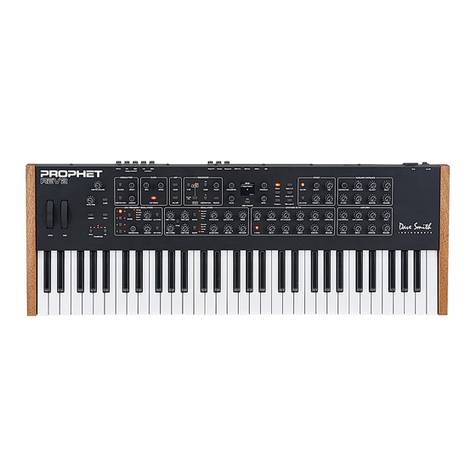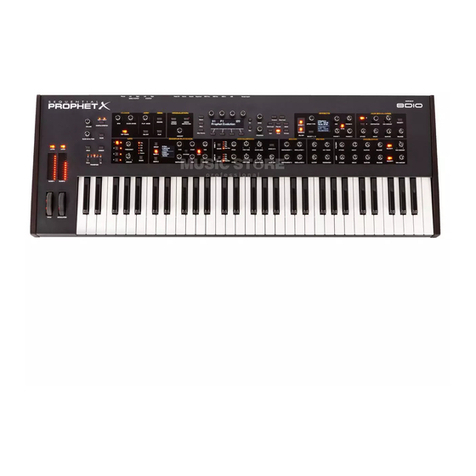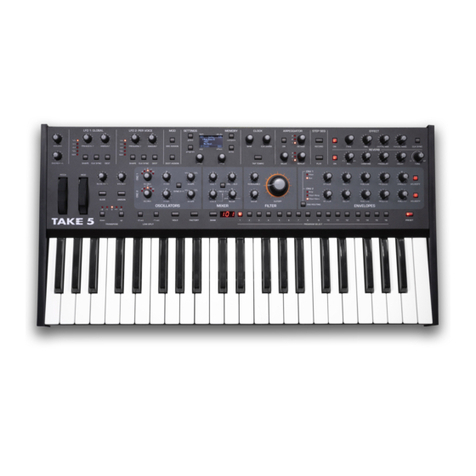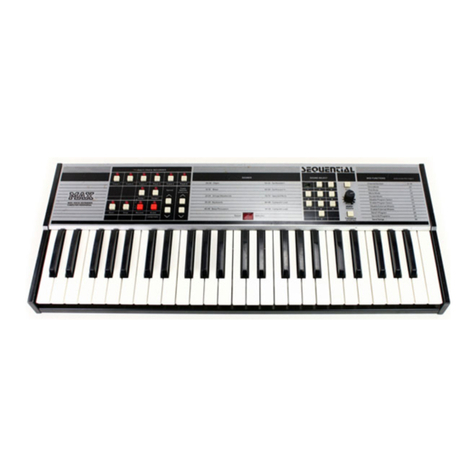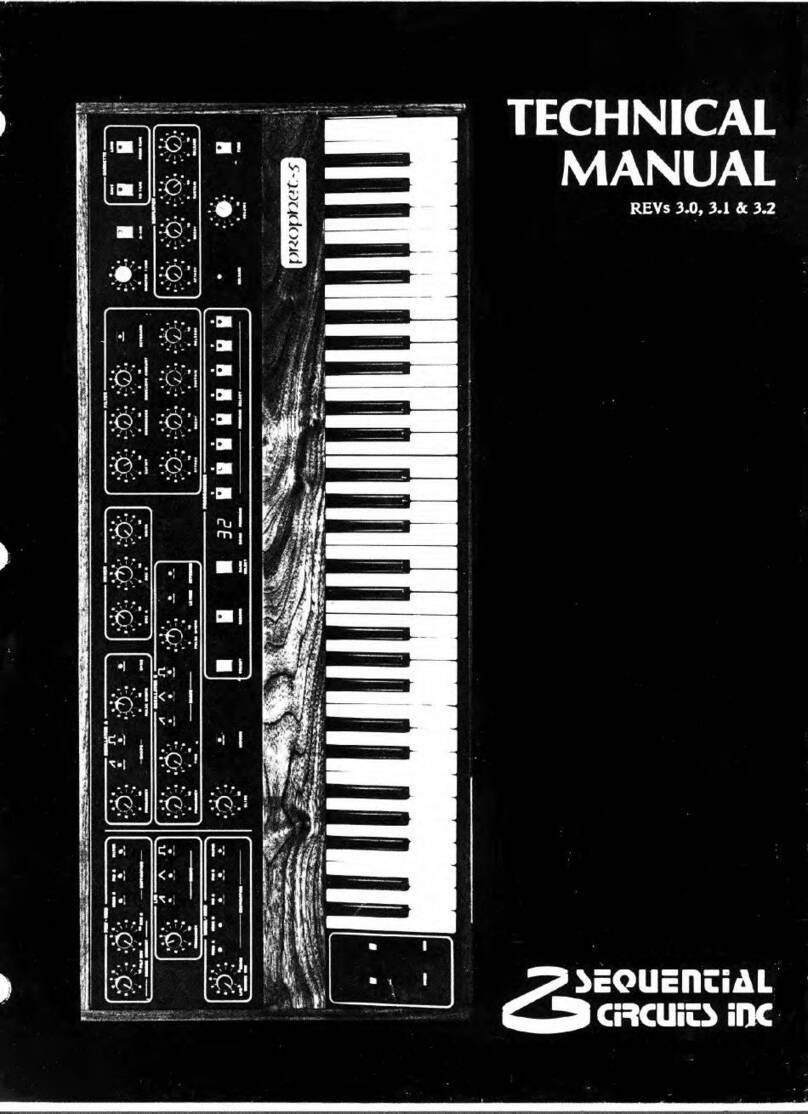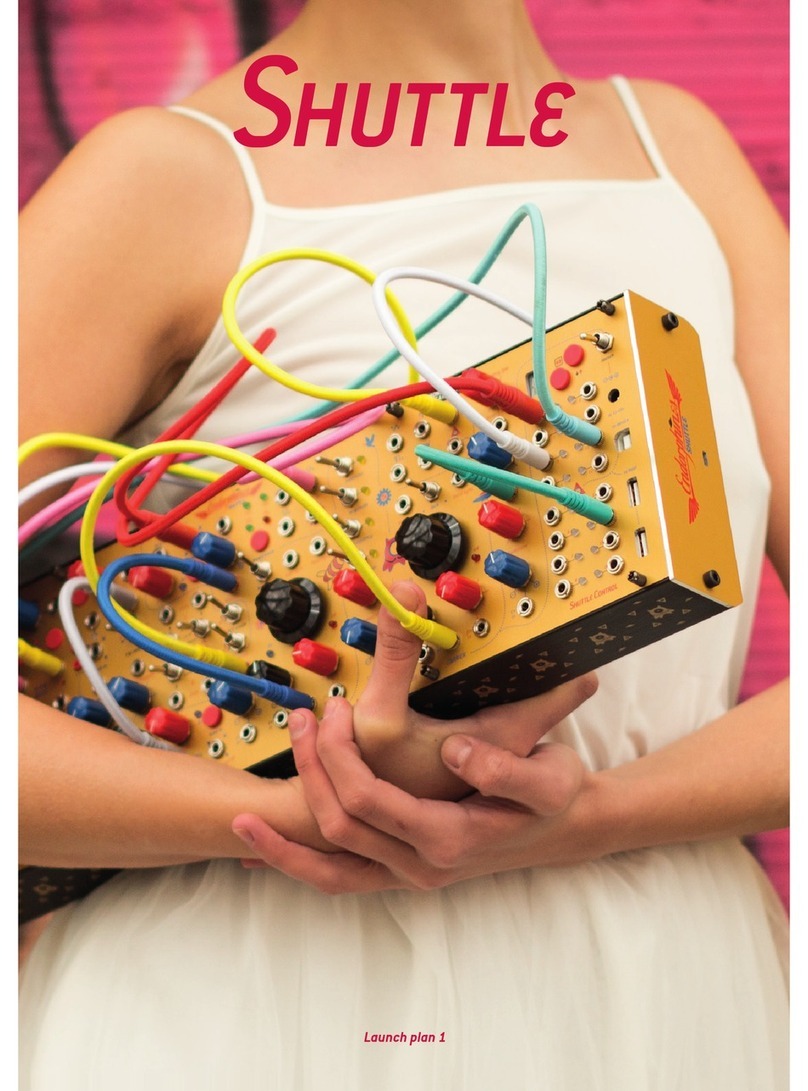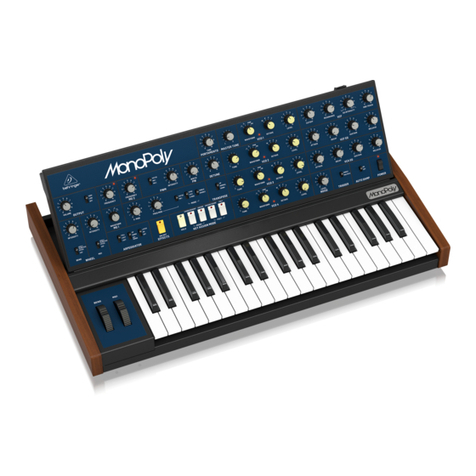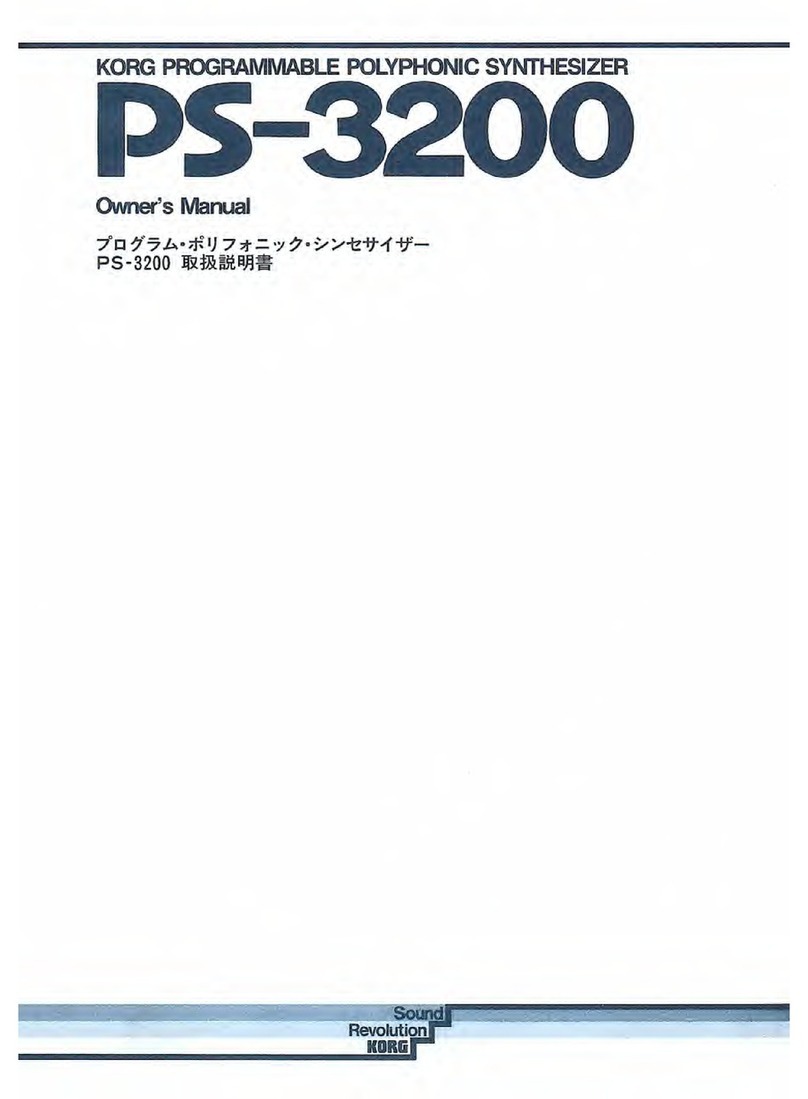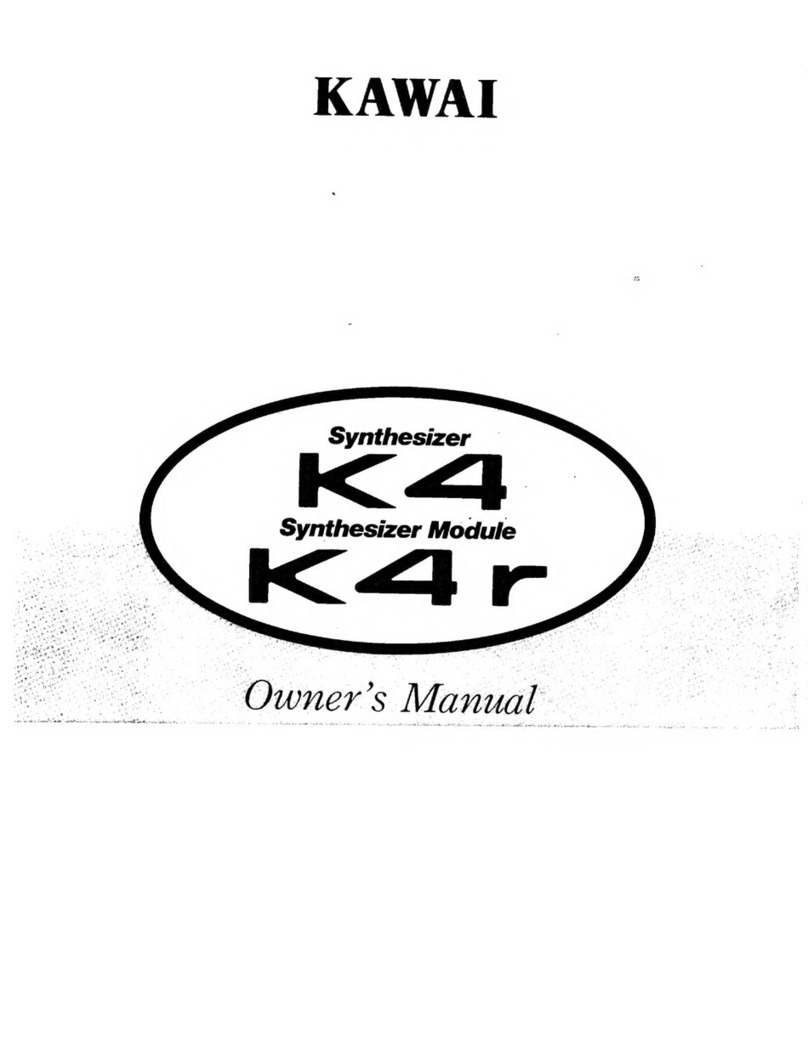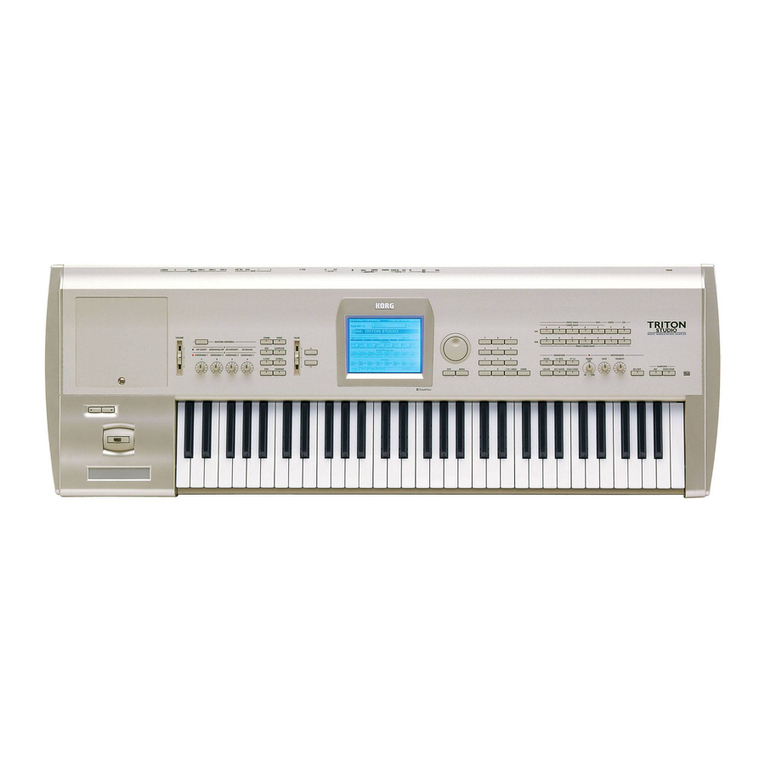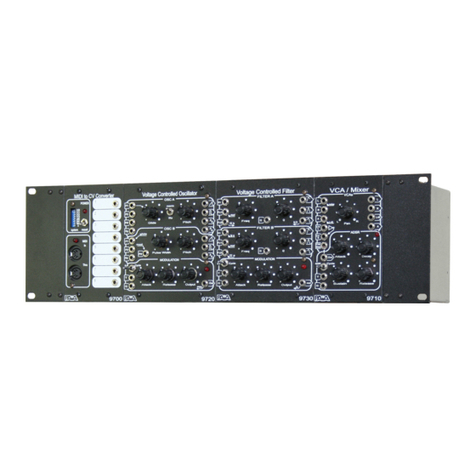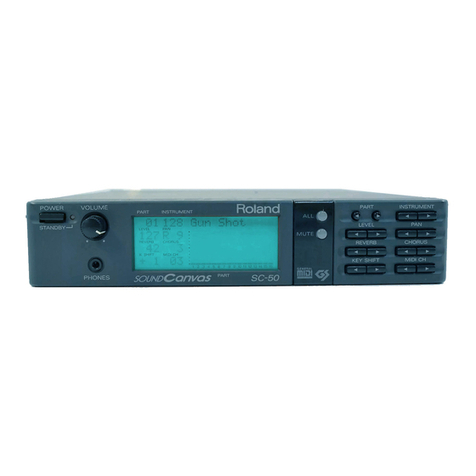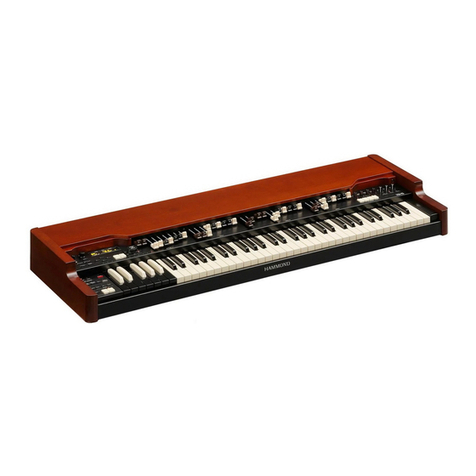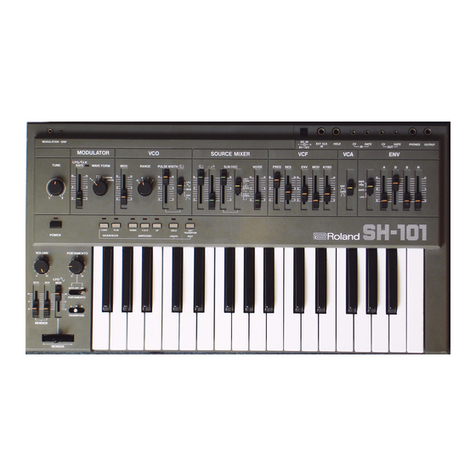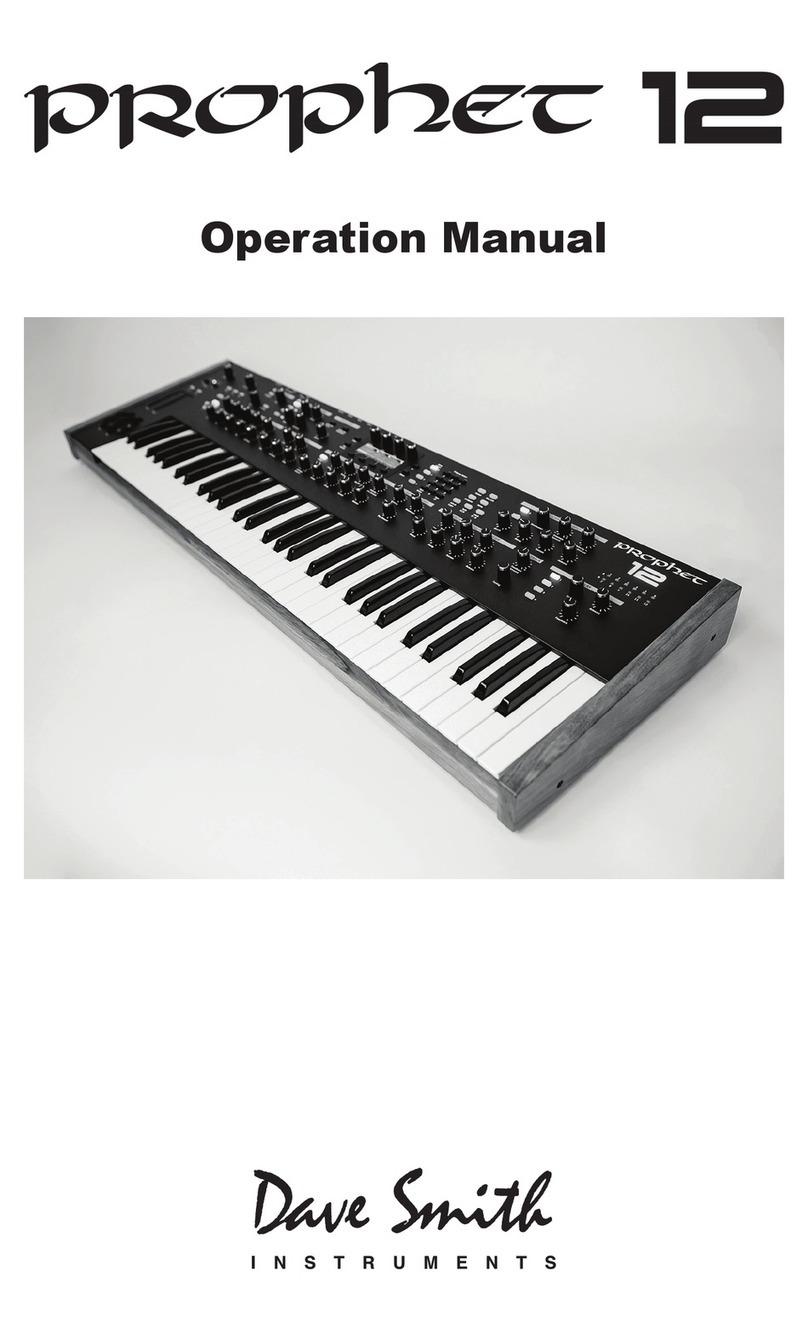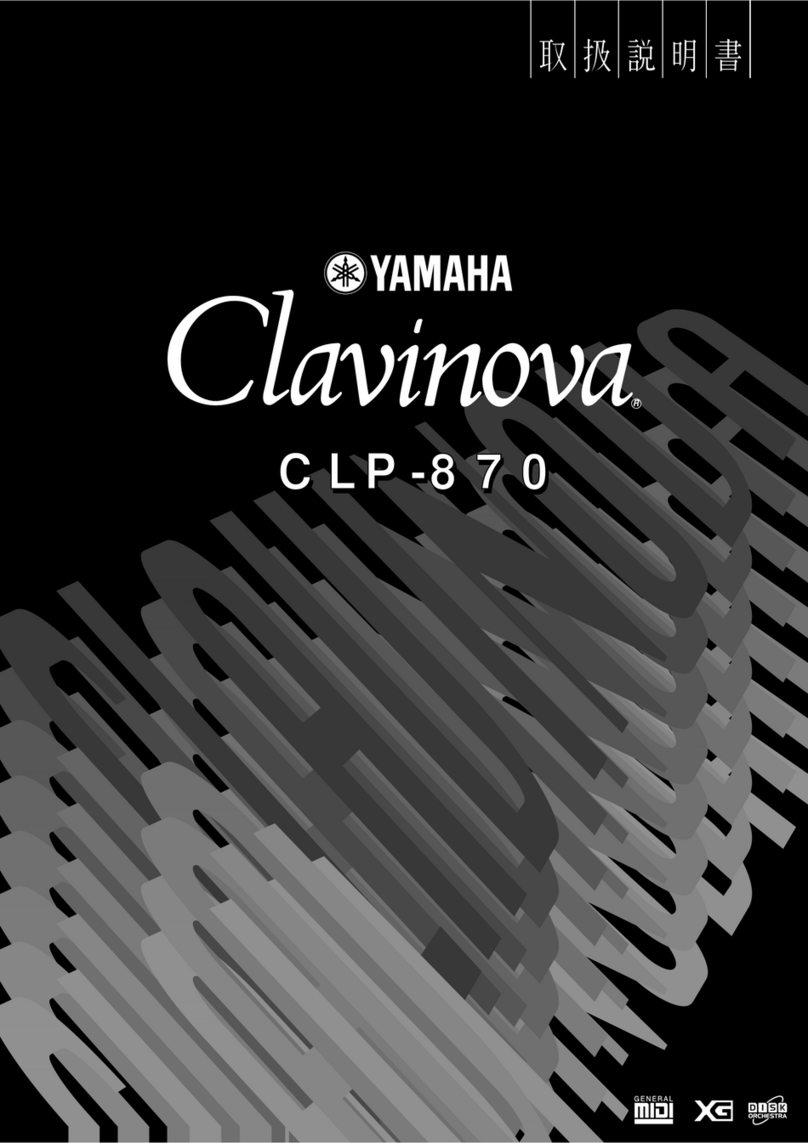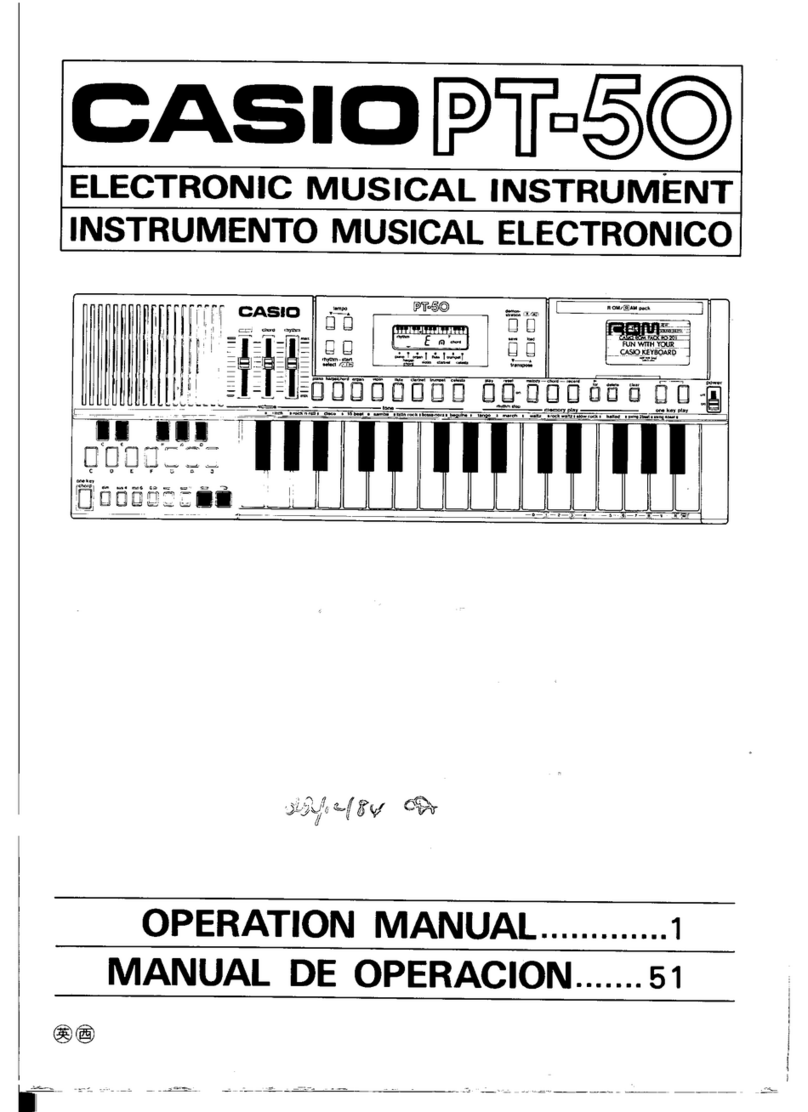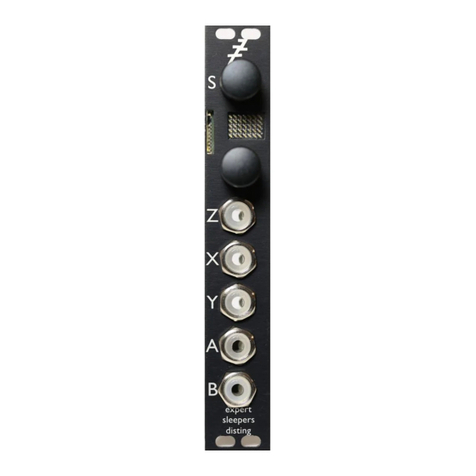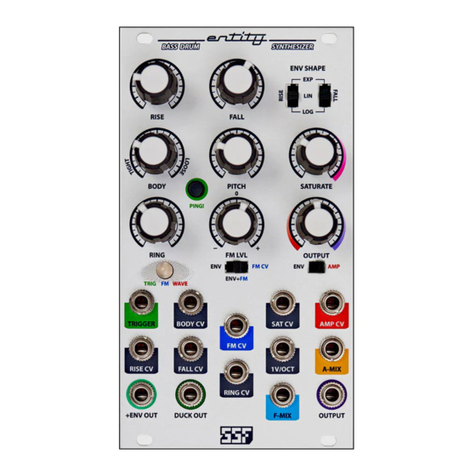2-2
OSCILLATOR
A
The
Pro-One's
three
oscillators
(OSC
A,
OSC
B,
LFO)
use
the
CEM
3340
integrated
voltage-controlled oscillator
(VCO).
As
in the
Prophets
and most standard synthesizer
modules, these
VCOs
operate
in
exponential
mode
(as
opposed
to
linear mode),
scaled
at BVloctave.
This
means
a
CV
change
of
exactly 1V ideally producmitch change of
exactly
one octave,
i.
e.
a doubling
of
frequency.
The
basic range
of
OSC
A
(and
OPC
B)
is
seven
octaves,
resulting from
up
to
3V
provided
by
the keyboard,
up
ta
3V
provided
by
the
OCTAVE
switch,
and
up to
a
little
more
than 1V provided
by
the
FREQUENCY
knob.
The
VCO
itself is
of course
a
complex
of
other circuits,
Basically,
the
summed
CY
input
drives
an
exponential control current generator,
which
charges
the
external
timing capacitor.
The
increasing
positive charge produces the ascending portion
of
a
triangle
wave
(by
direct integration). When this
charge
reaches
a
specific
level,
a
comparator switches-
in
a
discharge
path
for the capacitor, producing
the
descending
portion
of
the triangle
wave.
The
sawtooth
is
obtained
from
the
triangle
via
another
comparator and
switch.
The
pulse is created
by
a
cornparatar which toggles as the
sawtooth level matches
the
pulse
width
CV
input,
See
SD112.
Looking
at
the
various
signals
summed
into
U102
OSC
A's
control
pin
15,
R123
sets
the initial frequency,
R119
OSC
A
FREQUENCY
knob provides
over
1V
of
control through
R131.
R120
OSC
A
OFFSET
trimmer
adjusts
initial frequency through
R124,
When
centered,
R1210
MASTER
TUNE
is
+7.5V,
summed through
R126.
R133
adds
the
OSC
A
OCTAVE
voltage,
which
is
switched in
precise
1-volt
steps.
Precision
resistors
are
used throughout this circuitry
to
allow octave transposition
without
having
to
retune
R119
(OSC
A
FREQ).
The
switch circuit
itself
takes
advantage
of
the summing ability
of
the
op
amp.
The
divider
containing
RlllE
-lV
trimmer,
RlllQ,
and
Rll09
places
-lV
on
the input
of
Buffer
U107-7.
Figure
2-3
shows
the function
of
5105
05C
A
OCTAVE
switch,
which
can
also
be
thought
sf
as
a
2-bit
DAC.
The
low-impedance voltage source is switched through
R-2R
summing
resistors
to
an inverting
summer,
becoming
a
positive
voltage
at
U104-14.
R167,
of
course,
sets
the gain to
1.
C117
makes
a
low-pass filter to suppress switching noise.
Summed through
R
127,
Rl
PITCH
wheel contributes
a
nominal
OV
when centered.
I3101
and
Dl02
form
a
"deadband"
circuit. The inherent diode voltage drop reduces the
requirement that the
PITCH
wheel
be
exact1 centered
to
not detune the oscillators.
The
wiper
can
be
between
+/-
700
mV
be
741
ore
t
e
oscillators
are
affected.
QSC
A
is
always
under
contror
of
the
KYBD
CV
through
R121,
which
is
precision-
matched
to
R133
OSC
A
OCTAVE
summing resistor.
(The
origin
of
the
KYBD
CY
is
discussed in
par
a.
2-
1
2.)
5104
MODULATIQN
TO
OSC
A
FREQ
switch applies
a
modulation
CV,
mixed
ever
either
the
WHEEL
(WH)
or
DIRECT
CDIR)
modulation
busses,
through
R125.
(The
Modulation
source circuitry is discussed
in
para.
2-8.)
L




















